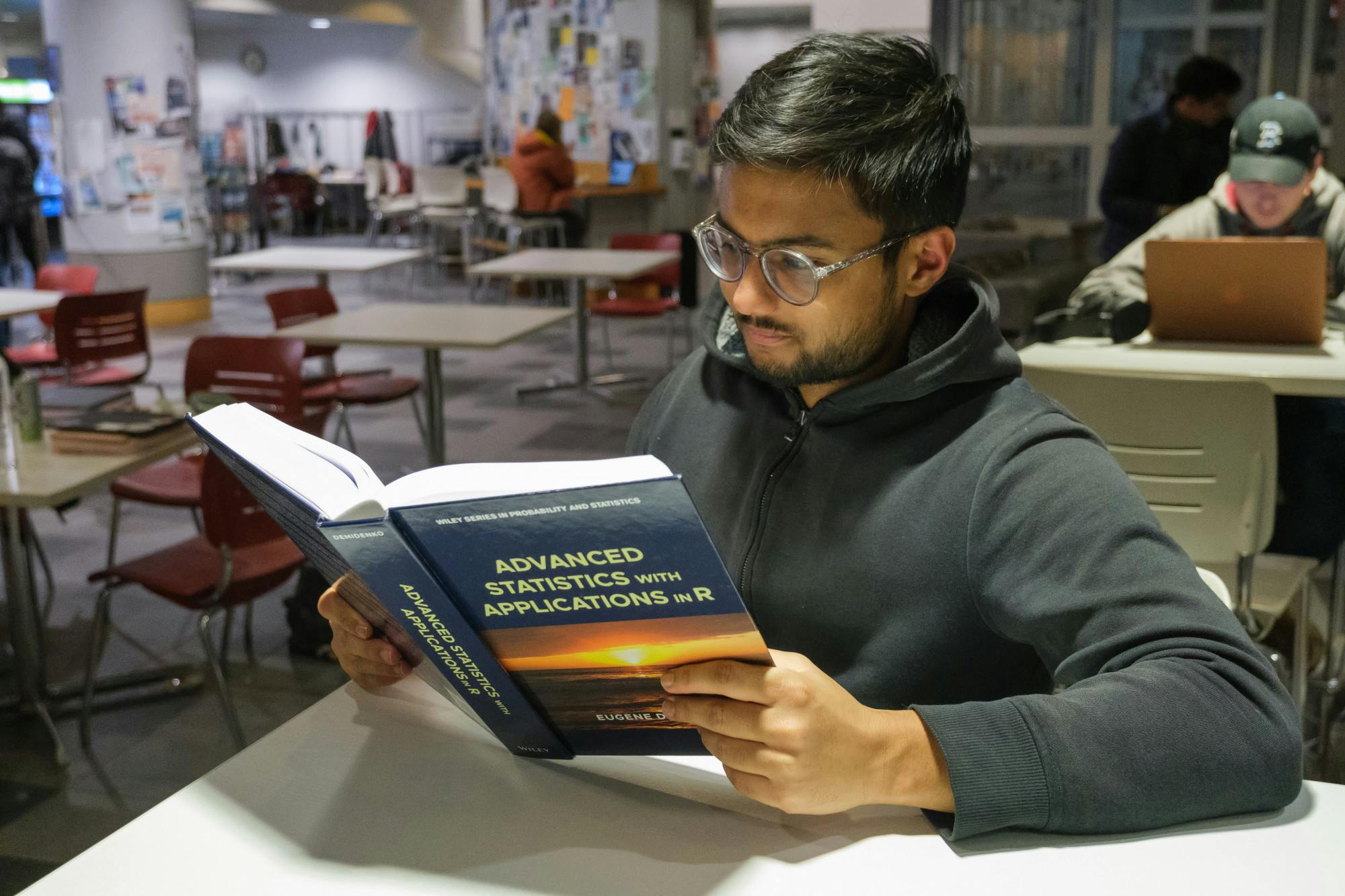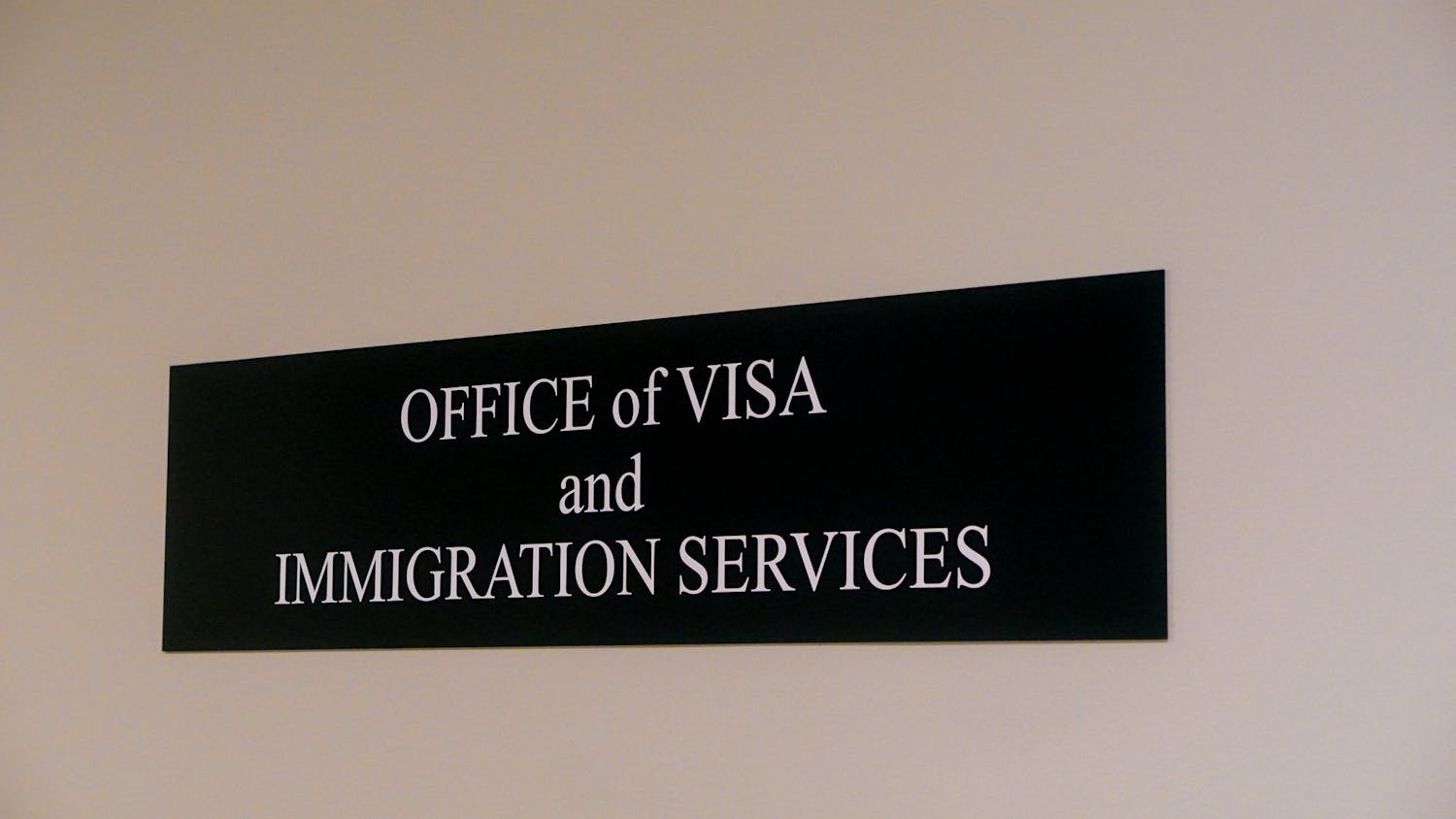Picture this: It is the start of a new term and the first day of classes. You’re sitting in your 10A, and the professor hands out the syllabus. You read through it and stumble upon the list of required texts and recommended readings. Although purchasing these textbooks may not be a financial burden for all students, it can be for some. Academic success can come at a very real cost, as students face the choice between prioritizing either their academic success or financial well-being.
For example, consider CHIN 4, “Advanced First-Year Chinese.” According to the syllabus as of fall 2023 — the last time the course was taught — students in this class were required to purchase two textbooks: “Integrated Chinese 1, Traditional (4th edition)” and “Integrated Chinese 2, Traditional (4th edition).” Each volume is a digital copy that is available for six months as part of a subscription which costs $78.99 and $82.99, respectively, at the time of publication.
The class’ instructor, Professor Alan Li, chose these particular books because they are the standard textbooks for teaching Chinese and popular at several other colleges. While he acknowledged that textbooks can get expensive, he believes that the price is worth it.
“I think a lot of the time, people can afford these books,” Li said. “My understanding is that [textbooks like those] provide all kinds of services . . . They charge you more money because you have access to different formats of the same textbook. There’s video, audio and the workbook or exercise book to go with it.”
Joyce Zou ’27, a first-generation low-income student who took the class this past fall, stated that due to the interactive nature of the textbook and its importance in the class, she felt she had no choice but to purchase them.
While she called the purchase “understandable” since she used the textbooks every day, she mentioned that she did not “see the reason to spend almost $100 to buy a book.” She also added that several of her classmates complained about the fact that they only had access to these books for six months, which was frustrating given the cost. Zou, who bought her textbooks during week one, said that she was fortunate enough to have sufficient funds before fall term to purchase those two textbooks out of her own pocket, though it did impose a strain on her finances.
“It’s hard because I had to pay for [the textbooks] myself,” said Zou. “After I bought them, I think I only had $200 left in my bank account.”
Financial aid only covers the cost of textbooks in some circumstances. According to the 2023-2024 Cost of Attendance, “books, course materials, supplies and equipment” are not billed directly by Dartmouth, but are an indirect expense of $1,005 per academic year as they are not purchased through the College. According to the website of the Office of Financial Aid, if a student’s financial aid package exceeds the costs of services provided by Dartmouth – such as housing, food, and tuition – then students may opt to use the remaining aid to cover the cost of their books.
Fortunately, some professors help students by providing initial portions of the textbook through PDF scans or online versions of the book. However, according to Ale Carrasco Alayo ’25 it can be difficult for students with financial restraints to ask this of their professors if they do not already provide alternative versions.
“It’s really hard to go and tell your professor, ‘Hey, you know what, I’m waiting for my refund to come by and I don’t have the money [to purchase textbooks],’” Carrasco Alayo said.
Li noted that he has never had a student approach him to say that they were unable to afford any of his required textbooks.
“If somebody were to come and ask me things like that, I cannot stop using [the textbooks],” Li said. “I would try to help the student solve his or her financial problem probably … I believe the college should have resources to help students. A student has to be able to buy textbooks in order to study subjects.”
Some classes list recommended, but optional, titles in their syllabi for students who want to further their understanding of the material. Such a recommendation adds “another layer” of financial complexity for students coming from low-income backgrounds, according to Carrasco Alayo. Most students either have to obtain an alternative format of those books or forego them entirely.
Lily Johnson ’27 stated that the need to even make such a choice is “problematic.”
“Generally, if [a textbook] is recommended, it’s going to help your performance in the course,” she said. “So if you don’t buy it because you aren’t required to have it, you might then do worse in the course.”
Zou made the conscious choice to obtain recommended textbooks for two classes she is taking this term, COSC 10, “Problem Solving via Object-Oriented Programming” and ECON 1, “The Price System: Analysis, Problems and Policies,” by accessing free copies online. However, it turned out that she “almost never” uses them, and it seems that those books were truly optional, as they “didn’t impact [her] much.”
Carrasco Alayo expressed that she would “love to” buy the recommended books, but said that she already spends “more than half” of the money she receives from financial aid on required textbooks alone.
“The professors know that there’s an income gap in each classroom,” she said. “There are people who will definitely go in to buy that book right after the professor [mentions the textbook], but there are people like us, but are we going to buy it?”
Li admitted that he hadn’t given “too much thought” on how textbook affordability, or lack thereof, can impact students, adding that he believed “most students at Dartmouth would not have this problem.”
According to the 2023-2024 Common Data Set, out of the 4,367 full-time undergraduate students enrolled in Dartmouth, 2,291 students were awarded some form of financial aid, which is more than 50% of students at Dartmouth. However, financial aid can only be used to pay for course materials when the amount of aid exceeds billable costs, so not all students on financial aid are able to qualify for this.
Carrasco Alayo urged professors to consider the impact that requiring and recommending textbooks can have on low-income students.
“I don’t want to say I’m disappointed, but I will say that it creates another layer of conversation of, ‘Who can access these books?’” she said.




